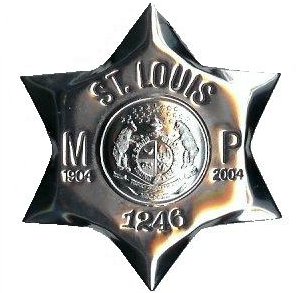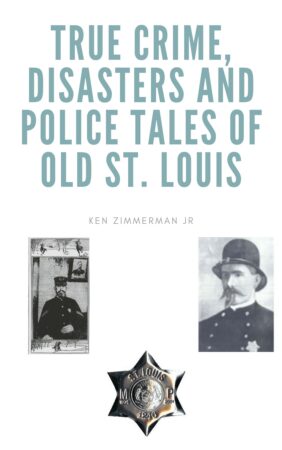Burglar Kills Officer Michael Walsh
It was very cold on the morning of Sunday, December 5, 1880, about 2 a.m., when St. Louis Police Officer Sheehan found the front door open to John R. Lionberger’s home. Owing to the bitter cold, Sheehan feared burglars had entered the residence. Sheehan rang the bell repeatedly but could not awaken anyone inside.
Sheehan began rapping his night stick against the pavement, which summoned Officer Michael Walsh from his adjoining beat. While Officer Walsh stood guard at the Lionberger’s front door, Officer Sheehan went to wake up the stable man. The stable man agreed to light a lamp and take Sheehan through the Lionberger home.
Sheehan returned to speak with Walsh, while he was waiting for the stable man. As they were speaking, they heard night sticks rapping on the pavement. The officers realized the burglary team, which had been working in the Downtown area for the past few weeks, was at work. However, the officers decided to stay and search the Lionberger house.

Early St. Louis Police Badge from the Public Domain
When the stable man approached the officers with a lamp, Sheehan and the stable man stealthily entered the house. Walsh stood guard outside. He told Sheehan he would stop anyone who came down the street, because of their search and potential burglaries on adjoining beats.
The stable man was able to awaken John Lionberger and his son. After a quick search of the house, Lionberger said the burglars did not take anything. Sheehan exited the front door in time to see Officer Walsh approach two men on the southeast corner of 16th and Olive Streets. The Lionberger home was on the northeast corner.
As Walsh approached a short man and a tall man, the tall man pulled a revolver, pointed it at Walsh’s head and shot him in cold blood. Walsh’s gun was in his back pocket. Due to the chilly weather, Walsh completely buttoned his heavy coat. Walsh also wore heavy gloves. Walsh could not have drawn his revolver if he wanted to.
Sheehan chased the killer north to 18th Street, while he fired shots at the fleeing men. At one point, the shooter turned and calmly fired at Sheehan. After missing the officer, he began running again. Sheehan lost the murderer at the alley near 18th Street. All the investigating officers found was one frozen footprint.
Sheehan returned to the scene, where the Lionberger family had placed Walsh’s lifeless body in a carriage. A doctor pronounced Walsh dead at the City Hospital.
St. Louis Police discovered that the burglars had burglarized five saloons and a grocery store near the Lionberger home. The detectives suspected burglars killed Walsh when he stumbled upon the burglars coming from the earlier burglaries. Later, investigators proved this theory true.
The burglars did not break into the Lionberger home. A strong wind must have blown the partially closed front door open. The burglars skipped the other Lucas Place residences as well. The burglars only broke into commercial businesses that night.
Police often solve crimes by being in the right place at the right time. Unfortunately, officers can also run into criminals unaware, and sometimes, with tragic results.
You can leave a comment or ask a question about this or any post on my Facebook page.
Sources: St. Louis Post-Dispatch, December 6, 1880, edition, p. 7
Pin It

